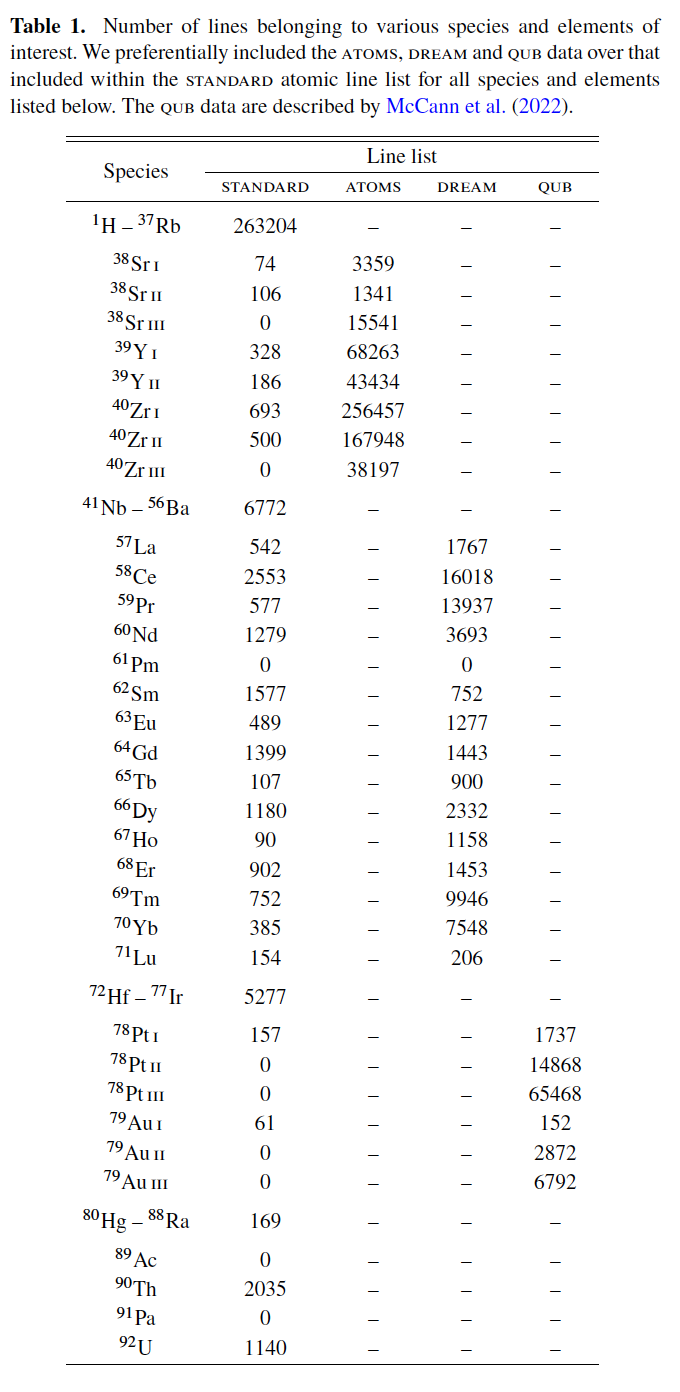Radiative-Transfer Simulation
is an open-source Monte Carlo radiative-transfer spectral synthesis code for 1D models of supernova ejecta. It is designed for rapid spectral modelling of supernovae but has been employed extensively to simulate kilonova spectra.
TARDIS assumes an optically thick photosphere that produces a single-temperature blackbody emission. When the emitted photons traverse a less opaque envelope (line-forming region), they interact with atoms, ions, and/or free electrons. This interaction leads to a modification in the spectral shape, featuring signatures from various line transitions. See below image.
The basic mechanisms for how TARDIS generates synthetic spectra are summarised in Tak et al. (2024, submitted), but for full details, see Kerzendorf & Sim (2014) or the TARDIS webpage.
Learn more

Density Profile
In this study, we adopt a simple density profile and its homologous expansion,

This profile finds widespread adoption in kilonova studies. This density profile can be optained when the mass ejection proceeds in a specific way (see Figure). The figure shows the velocity and its derivative of ejected mass as a function of the ejection time. For details, see Tak et al. (2023).
Learn more

Atomic Data
We compose the atomic data set, which, in addition to the default TARDIS atomic data set, contains the extended Kurucz atomic data (Kurucz et al., 2018), the Database on Rare Earths At Mons university (DREAM; Quinet et al., 2020), and the complementary atomic data presented by Gillanders et al. (2021) and McCann et al. (2022). In total, we include 1,029,577 transition lines from 49,117 energy levels in elements of 1≤Z ≤92. For details, see below Table and Gillanders et al. (2022).
Learn more

Composition (Solar r-process Abundance)
Since we aim to explore the impact of ejecta temperature and mass, we refrain from varying the abundance. Instead, we adopt the solar r-process abundance in this simulation, adopted from Prantzos et al. (2020).
Prantzos et al. (2020) (see below Figure) introduced a new method for determining the s- and r-components of the Solar system abundances. Their method involved studying the evolution of the solar neighborhood using an advanced 1-zone model. This model incorporated the latest yields from low and intermediate mass stars, along with those from massive rotating stars.
Learn more
